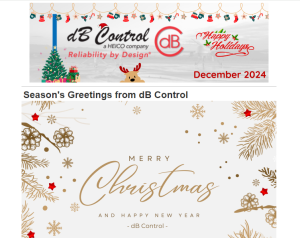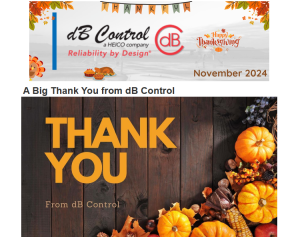In the last post on SWAP-C considerations, we introduced the challenges inherent in working with high frequencies – specifically, Ka-band (continuous wave [CW] and pulsed) and Q-band (CW only). Here, we’ll help design engineers understand how to overcome these challenges – and dispel some misconceptions along the way.
The added complexity of producing smaller components for high-frequency applications generally increases lead times. At lower frequencies, TWTs are built and manufactured at larger sizes, so they’re easier to achieve. As the components get smaller, it is not only harder to construct each component, but fallout increases (i.e., yield decreases); you may have to build several TWTs to achieve one good unit. For example, for dB Control, the gating item is the tube. The tube lead timing in a Ka-band unit is anywhere from 25 to 50 percent longer than that of a lower frequency unit.
Despite these challenges, TWT still is preferred to solid-state devices, as evidence does not support claims that GaN SSPAs provide an adequate solution operating at higher frequencies and greater output power levels.
Consider that current GaN devices operating in the Ka-band are very low power. For example, if a designer needs 100 W of output power to provide CW for a Ka-band unit, multiple GaN devices would have to be combined — adding to size, weight, and power draw, not to mention cost. Further, signal loss compounds as components are added, as does heat generation, degrading efficiency and, potentially, reliability. A TWT solution comprises one output device that is able to produce more output power with greater efficiency. Finally, note that the commonly held belief solid state is more reliable than TWT depends on the application. For example, a system running on the ground may benefit more using solid-state devices. A system running on a ship might lead to a toss-up decision between solid state and a TWT.
However, on an airborne platform, a TWT offers a significant reliability advantage due to the operating conditions: high shock, altitude, vibration, and temperatures. High temperatures, in particular, are detrimental to solid-state devices, whereas TWTs are designed to run at elevated base temperatures for long periods of time.
That said, don’t be fooled by metrics like mean time between failures (MTBF), often touted as indicative of reliability for solid-state devices. A solid-state device offers a higher MTBF than a TWT because a TWT has multiple components and a higher parts count. However, MTBF doesn’t equate to device longevity. Consider that a battery may have a MTBF of 1 million hours (theoretically, and performing under ideal conditions); realistically, that battery is more likely to last a few hours.
Proven High-Frequency Expertise
dB Control has built Ka-band amplifiers for more than 14 years and has provided products for military applications – operating in harsh environments – for 30 years. In that time, dB Control has:
- Become proficient in designing and building modulators, as well as integrating them into solutions (i.e., to handle pulsed wave applications, such as radar, or some EW tasks).
- Familiarized itself with its customers’ application demands: what is needed if the unit is to operate at 50,000 feet, or 70,000 feet? What about performance in a pressurized aircraft cabin versus a non-pressurized cabin?
- Perfected winding its own transformers, a vital component of high-voltage power supplies. dB Control uses both proprietary methods and materials in the encapsulation of high-voltage system sections. Absent encapsulation, the proper potting materials or procedures, power supply circuits risk arcing and causing component or system failure, and can become very large in size.
Every dB Control product, from the component level and sub-assembly level all the way up to the amplifier level, is subjected to environmental stress screening before it is shipped.
While numerous vendors perform environmental stress screening, no others combine in-house transformer winding plus full encapsulation, as well as the experience to execute the appropriate testing and ensure the tightest of electrical tolerances specified down to the component level.
As to whether one should seek commercial off-the-shelf (COTS) units or custom components, the application guides the answer.
Excellent high-frequency TWTs are available off the shelf, but most operate at fairly standard frequencies. Customization becomes relevant when a customer, depending on their project needs, asks for more power, a slightly higher or lower frequency, a broader bandwidth, or guarantees for a certain linearity (applies to MPMs, as well).
Custom orders require an understanding of the “stat weight” afforded to different unit specifications within the user’s application. First, the vendor has to offer the frequency range and the power needed. Other parameters then vary. For example, in a satcom application, linearity is a key concern. In ECM, EW, or radar applications, weight and efficiency will be key concerns, because the solution may be mounted on an airborne platform.
Currently, dB Control mmWave amplifiers are used in communication, radar, ECM, and EW systems — a broad range of products compared to competitors. Challenges exist to working in all of these bands and application areas, and rich experience not only teaches us how to overcome those hurdles effectively, it allows us to apply the lessons learned across different technologies.
At its core, dB Control is an amplifier manufacturer specializing in the high-voltage power supply. We are output device agnostic – whether it’s a vacuum tube or solid-state output device, we aim to choose the most viable solution for the application and customer’s needs.
Questions about designing for the Ka-band and Q-band? Contact us today.


